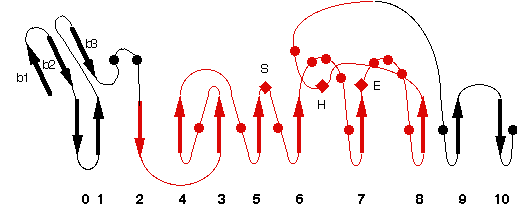8CGO
Name : Structure of human butyrylcholinesterase in complex with N-{[2-(benzyloxy)-3-methoxyphenyl]methyl}-N-[3-(2-fluorophenyl)propyl]cyclobutanamine
Revelation date : 14-Jun-2023
Family : BCHE
Gene_locus : human-BCHE
PDB file : ESTHER: header of PDB entry RCSB: Full entry
Comment
Filip Pidany, Jana Kroustkova, Abdullah Al Mamun, Daniela Suchankova, Xavier Brazzolotto, Florian Nachon, Fabien Chantegreil, Rafael Dolezal, Lenka Pulkrabkova, Lubica Muckova, Martina Hrabinova, Vladimir Finger, Martin Kufa, Ondrej Soukup, Daniel Jun, Jaroslav Jenco, Jiri Kunes, Lucie Novakova, Jan Korabecny, Lucie Cahlikova
Ligand :
References (1)
| Title : Highly selective butyrylcholinesterase inhibitors related to Amaryllidaceae alkaloids - Design, synthesis, and biological evaluation - Pidany_2023_Eur.J.Med.Chem_252_115301 |
| Author(s) : Pidany F , Kroustkova J , Al Mamun A , Suchankova D , Brazzolotto X , Nachon F , Chantegreil F , Dolezal R , Pulkrabkova L , Muckova L , Hrabinova M , Finger V , Kufa M , Soukup O , Jun D , Jenco J , Kunes J , Novakova L , Korabecny J , Cahlikova L |
| Ref : Eur Journal of Medicinal Chemistry , 252 :115301 , 2023 |
| Abstract : Pidany_2023_Eur.J.Med.Chem_252_115301 |
| ESTHER : Pidany_2023_Eur.J.Med.Chem_252_115301 |
| PubMedSearch : Pidany_2023_Eur.J.Med.Chem_252_115301 |
| PubMedID: 36996715 |
| Gene_locus related to this paper: human-BCHE |
Representative scheme of Prolylcarboxypeptidase structure and an image from PDBsum server

